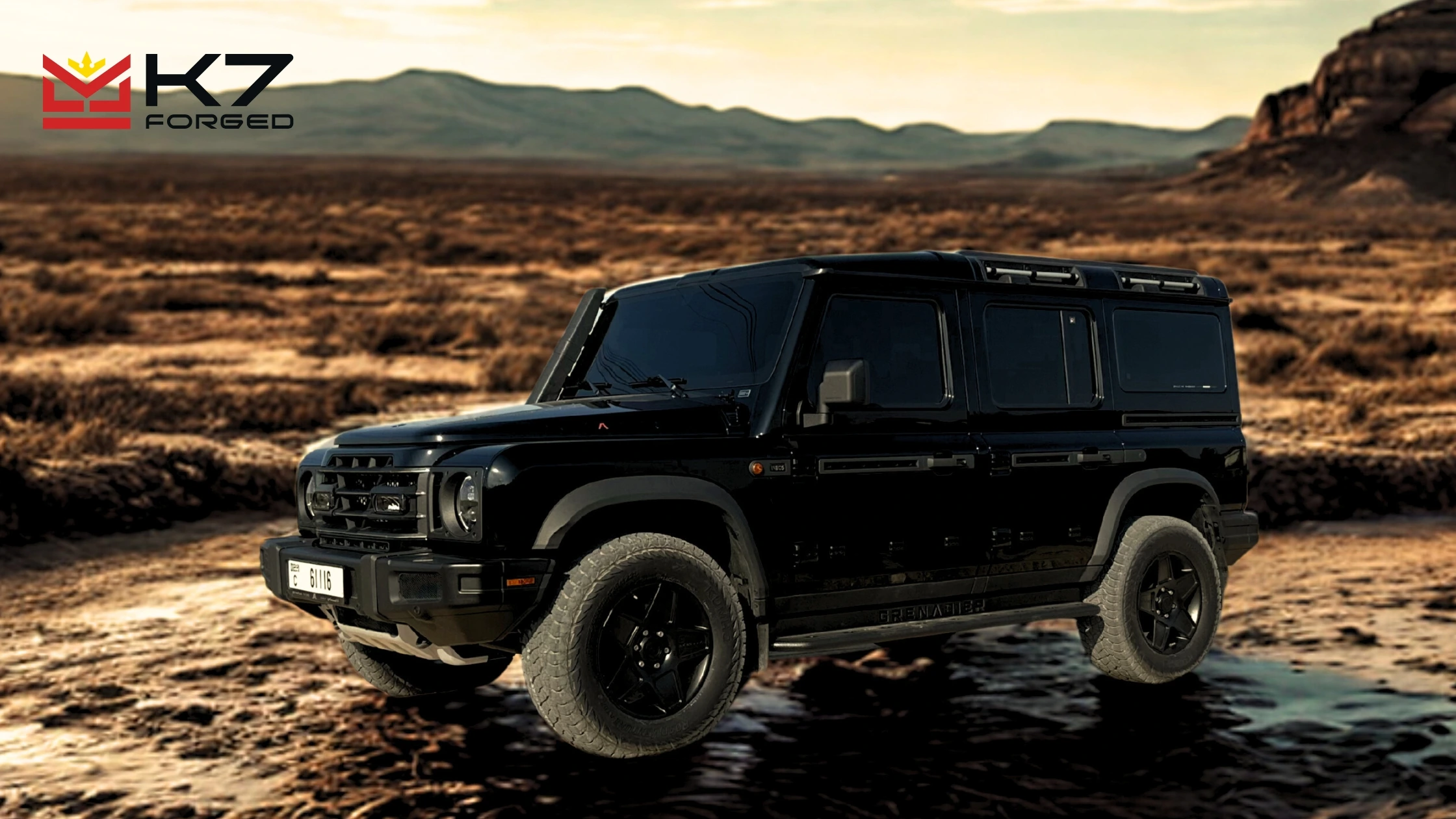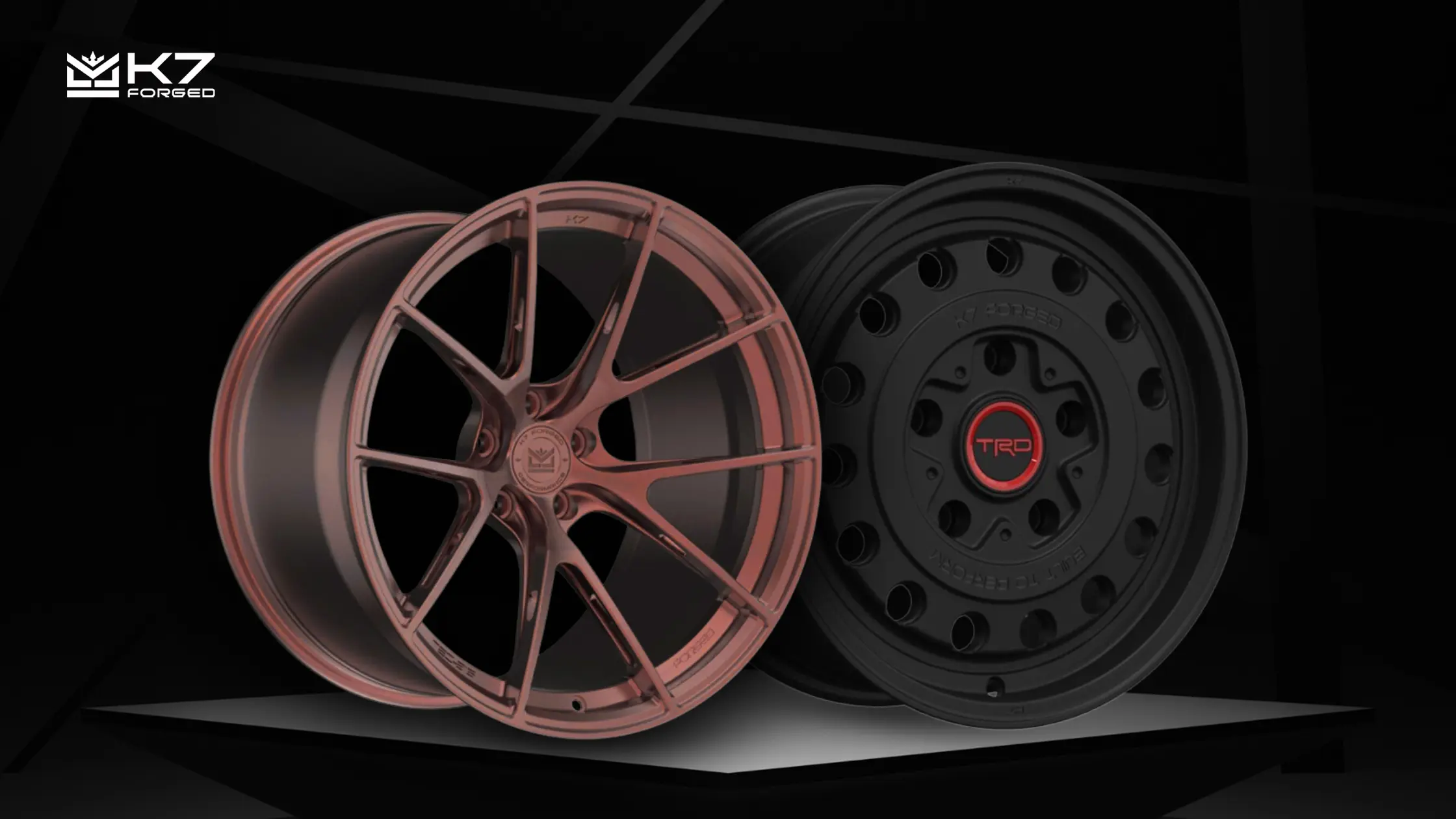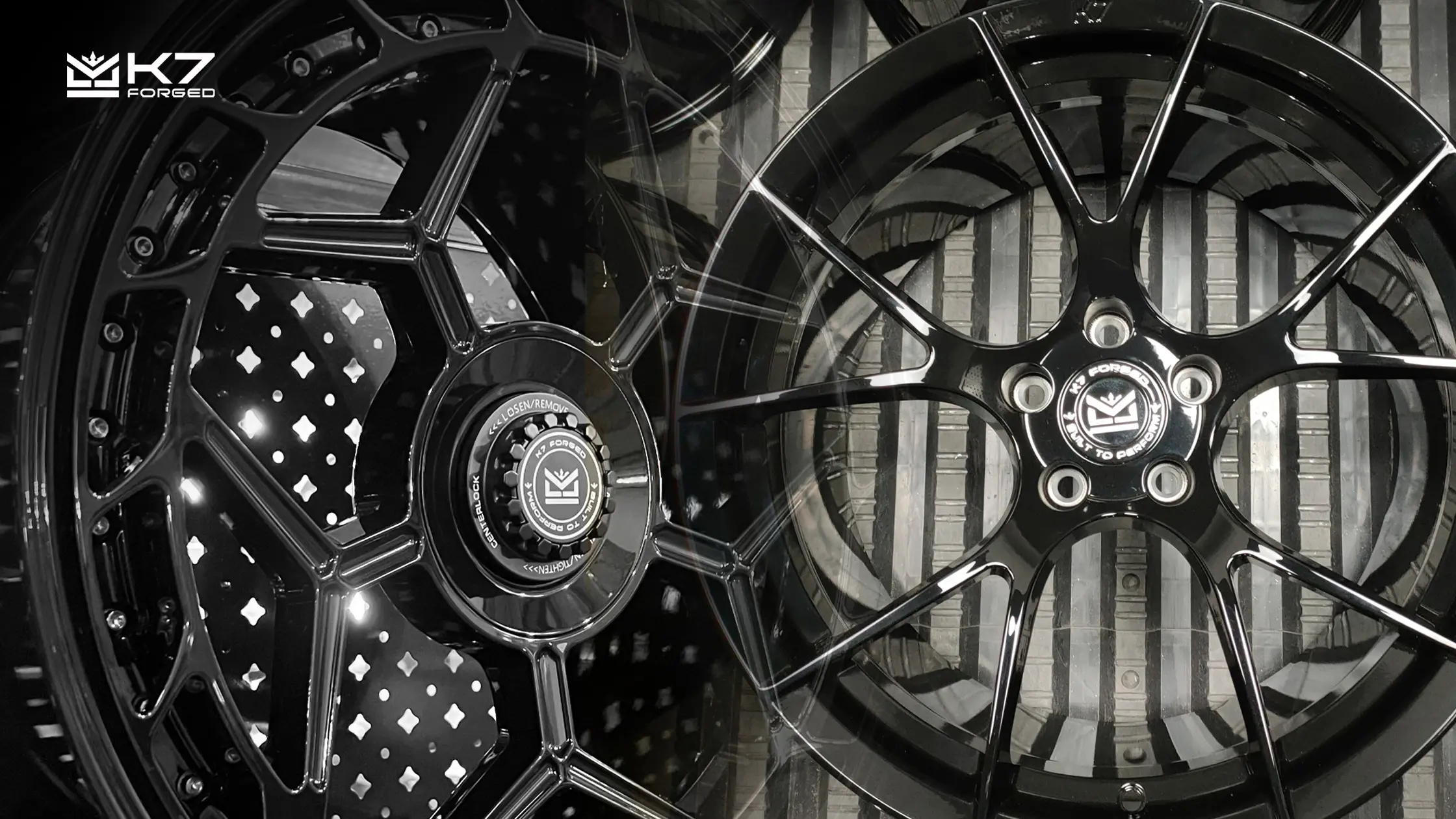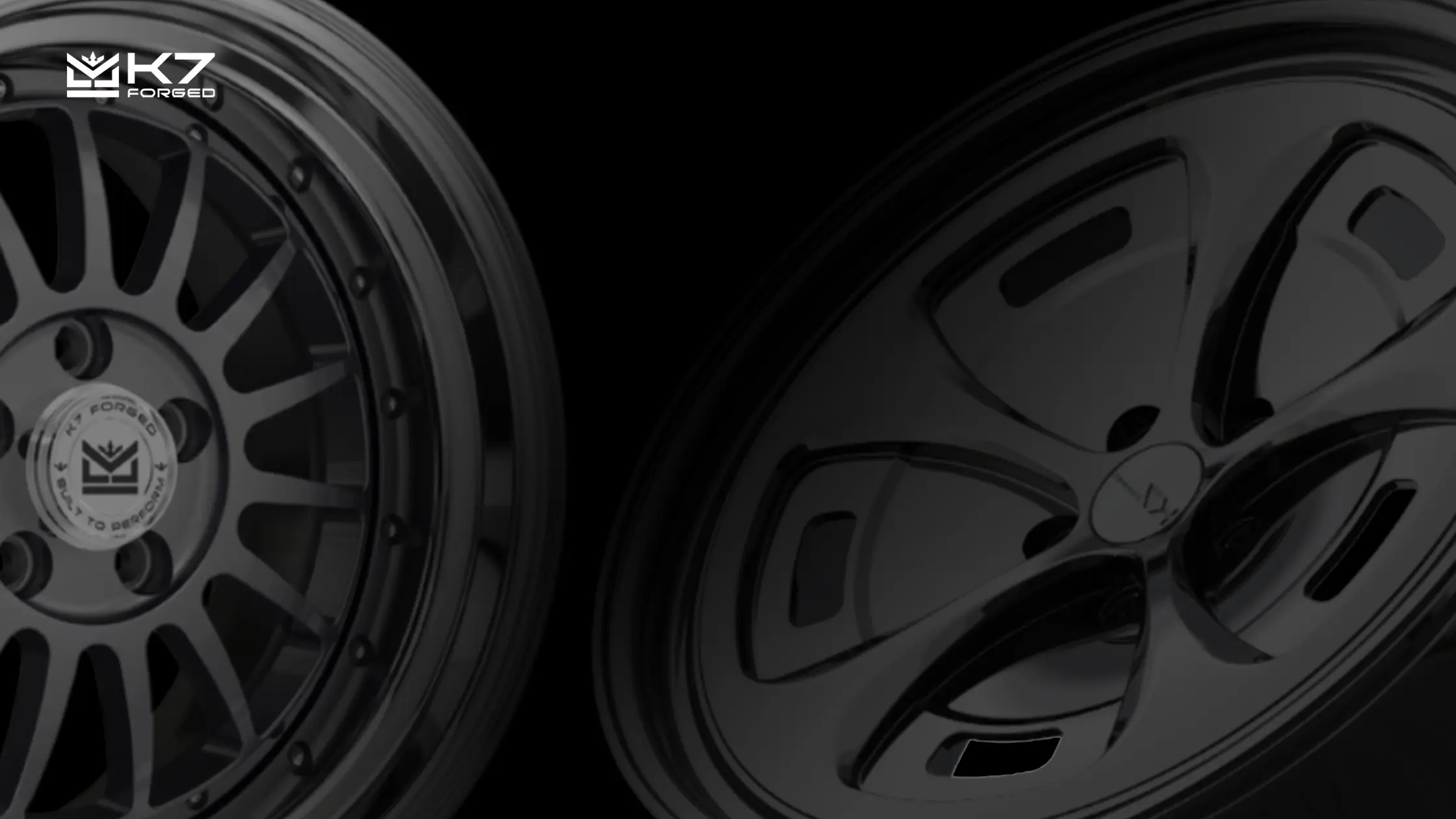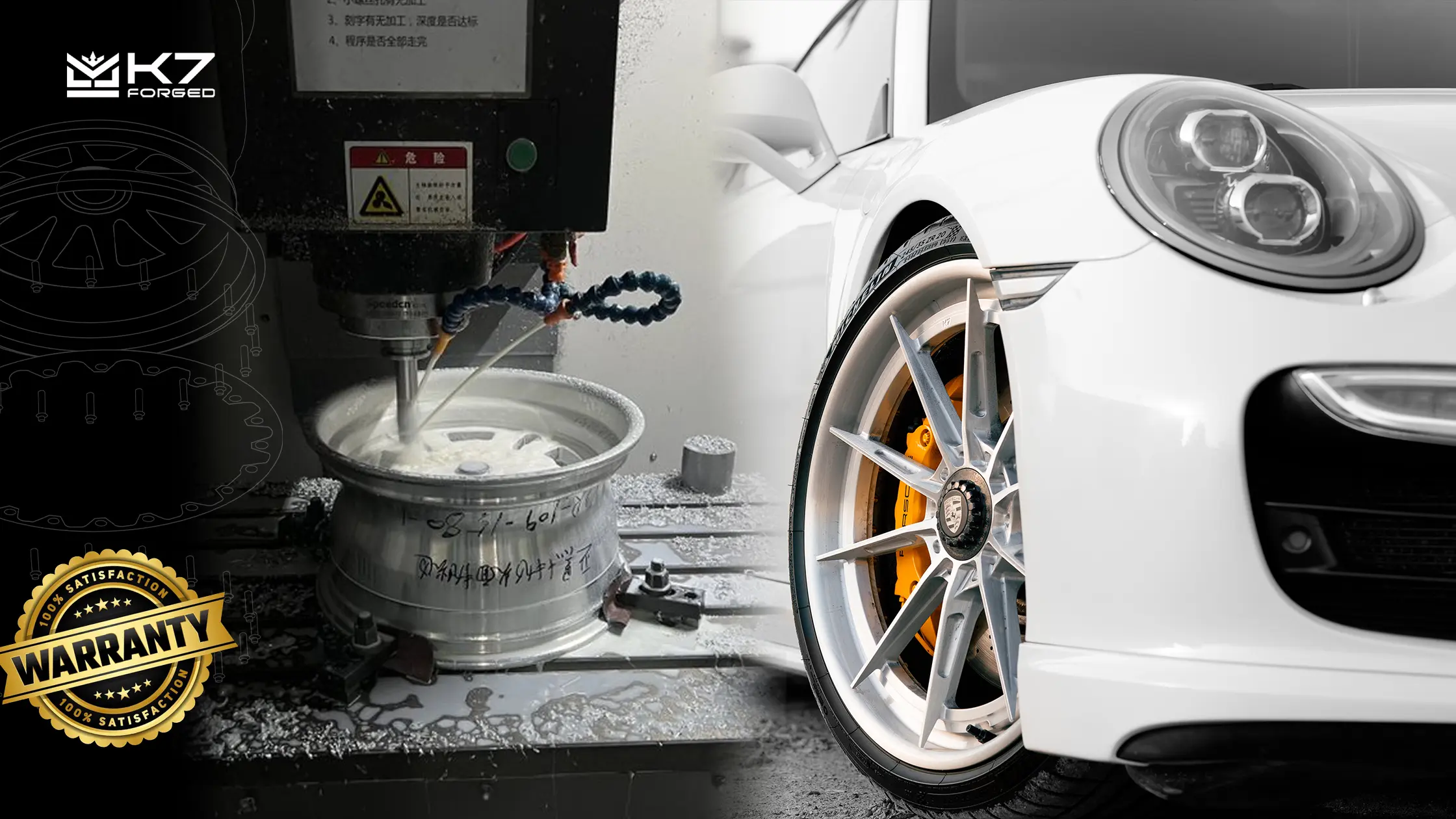There’s nothing quite like the sleek look of low profile tyres. But to get the most out of them, both in looks and performance, you need the right wheels. And racing wheels are often the answer.
As a car enthusiast in Dubai, you might have thought of cruising down the Sheikh Zayed Road with the skylines reflecting on your windscreen. Your car, fitted with low-profile tyres, already looks the part—aggressive, sporty, and undeniably stylish.
But behind the wheel, you crave a closer connection to the road. Low profile tyres gives you that sensation, and precise response when you take on a sweeping highway curve.
Racing wheels and low profile tyres are a match made in heaven. As alloy wheel manufacturers in Dubai, we feel it’s our responsibility to tell you that wheel size matters too. This blog is your complete guide to find the right size alloy wheel for your low profile tyres.
What exactly are Low Profile Tyres?
It’s all about the sidewall—the height of the tyre between the wheel rim and the tread. Low profile tyres have a much shorter sidewall compared to standard tyres. You can easily spot them by looking at the tyre size code.
The middle number, like “40” or “45” in “245/40R18”, is the aspect ratio. This percentage tells you the sidewall height relative to the tyre’s width. A lower number means a shorter sidewall – and anything lower than 50% makes it a low profile tyre.
Low profile tyres give your car an aggressive, sporty look; sort of like how a jaguar gets ready to ambush it’s prey. The smaller sidewalls make the wheels appear larger and the car more closer to the road.
That being said, the suspension might take a hit because low profile tyres have less sidewall to absorb bumps. The ride can be firmer. But Dubai has some of the best roads, so you’ll be fine.
Why Choose Racing Wheels for Low Profile Tyres?
Racing wheels are not exclusively for race cars. Think of racing wheels as wheels engineered with performance as the main goal. So, race wheels aren’t just for the track and bring real-world benefits to performance-oriented cars, especially the ones with low profile tyres.
But why are racing wheels perfect for low profile tyres? Well, the reason is pretty straightforward. It boils down to rotational inertia and upsrung weight.
Racing wheels are made to be light, especially at the outer edge. Lighter wheels don’t need much energy to spin and stop. So, when you pair them with low profile tyres, which already give you quicker steering, this effect gets amplified.
Less wheel weight means quicker acceleration, sharper braking, and more responsive handling, giving you the sporty feel of low profile tyres.
Alloy Wheel Size Guide for Low Profile Tyres
Low profile tyres perform well only if they are paired with wheels that are the correct size for your specific car. If you get this wrong, your car may suffer from a host of problems, including poor handling.
How to Choose Low Profile Alloy Wheel Size:
- Diameter:
Getting a larger wheel diameter is a common upgrade. A slightly larger diameter can also sharpen handling marginally by reducing sidewall flex further.
But if you drastically increase diameter, it can reduce ride comfort and even speedometer accuracy because it changes the overall rolling circumference of your wheel and tyre combination.
Let’s take a popular JDM sports car in Dubai, the Nissan 370Z. Stock wheel diameters are typically 18 or 19 inches. Many 370Z owners in Dubai might move up to 19-inch or 20-inch racing wheels. Going beyond 20” on a 370Z for street use might start to compromise ride quality.
- Width:
Wider wheels can create a more aggressive, flush look, bringing the wheel edge closer to the fender. However, too wide and you risk tyre rubbing against the fenders, especially when turning.
A stock Nissan 370Z might have rear wheels around 9 or 9.5 inches wide. Upgrading to racing wheels means for a 10-inch or 10.5-inch wide rear wheels and better grip at the Dubai Autodrome.
- Offset
Wheel offset dictates how far in or out your wheel sits in your wheel well.
- Positive Offset: Wheel mounting surface is closer to the outside edge of the wheel.
- Zero Offset: Wheel mounting surface is exactly in the center.
- Negative Offset: Wheel mounting surface is closer to the inside edge.
A stock 370Z might have a rear offset around +30mm. When upgrading to wider racing wheels, owners often look for offsets in the +15mm to +25mm range to bring the wheels more flush with the fenders.
- Bolt Pattern (PCD – Pitch Circle Diameter)
This is the diameter of the circle formed by your wheel studs or bolts. It must match your car’s hub exactly. Expressed as two numbers, like “5×114.3” (5 bolts, 114.3mm PCD). Bolt patterns are not something you can fudge or force.
- Center Bore
Ideally, you’ll need hub-centric fitment, where the center bore of the wheel matches the diameter of your car’s hub. The Nissan 370Z has a 66.1mm center bore. Choose wheels with a 66.1mm center bore for a direct hub-centric fit. If you choose wheels with a larger center bore (common with aftermarket wheels), you should use high-quality 66.1mm wheel center bore hub-centric rings.
Finding Wheels list for low profile tyres in Dubai
If you’re serious about low profile tyres, then you’ll need to find the right racing wheels for them. What makes high-performance racing wheels stand out is their material of construction.
6061-T6 Aerospace Grade Forged Aluminum is a prime example. This premium material, and forging, gives significant advantages like lighter weight (often 25-30% less than cast wheels) and exceptional strength.
All K7 Forged racing alloy wheels come with this same material and lifetime warranties as well. You can choose from a range of sizes and of course, we also have custom alloys for low profile tyres.
